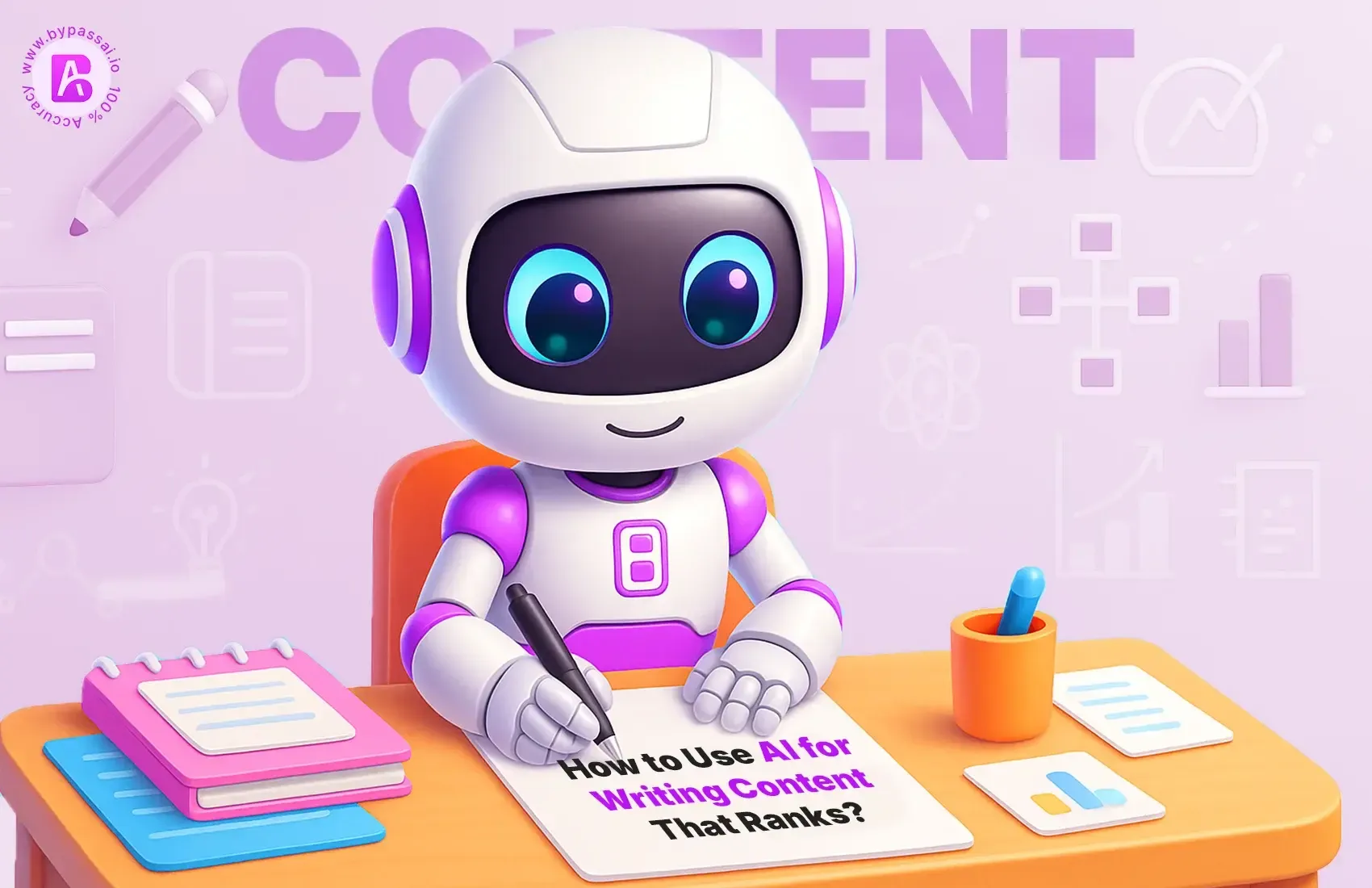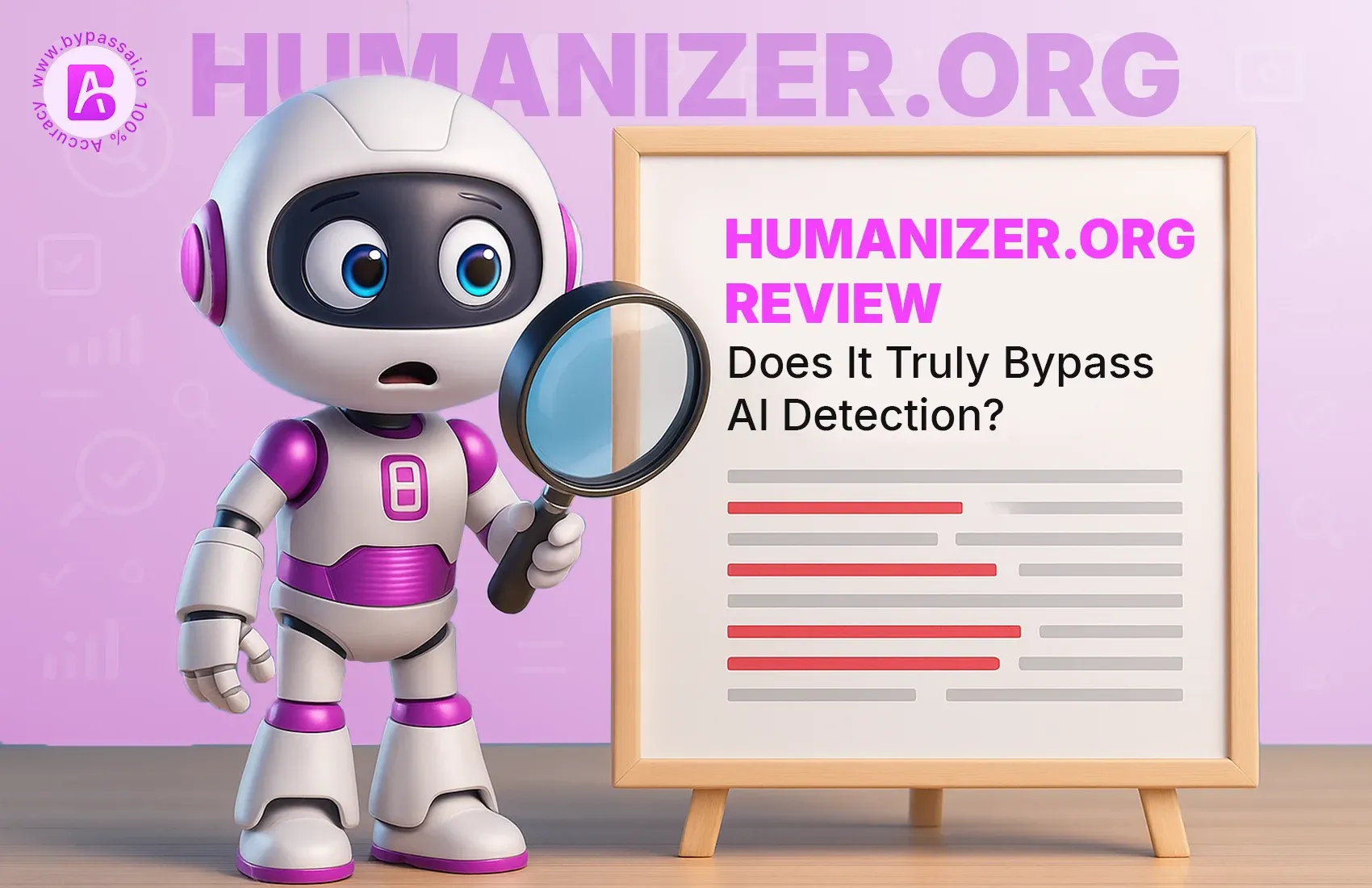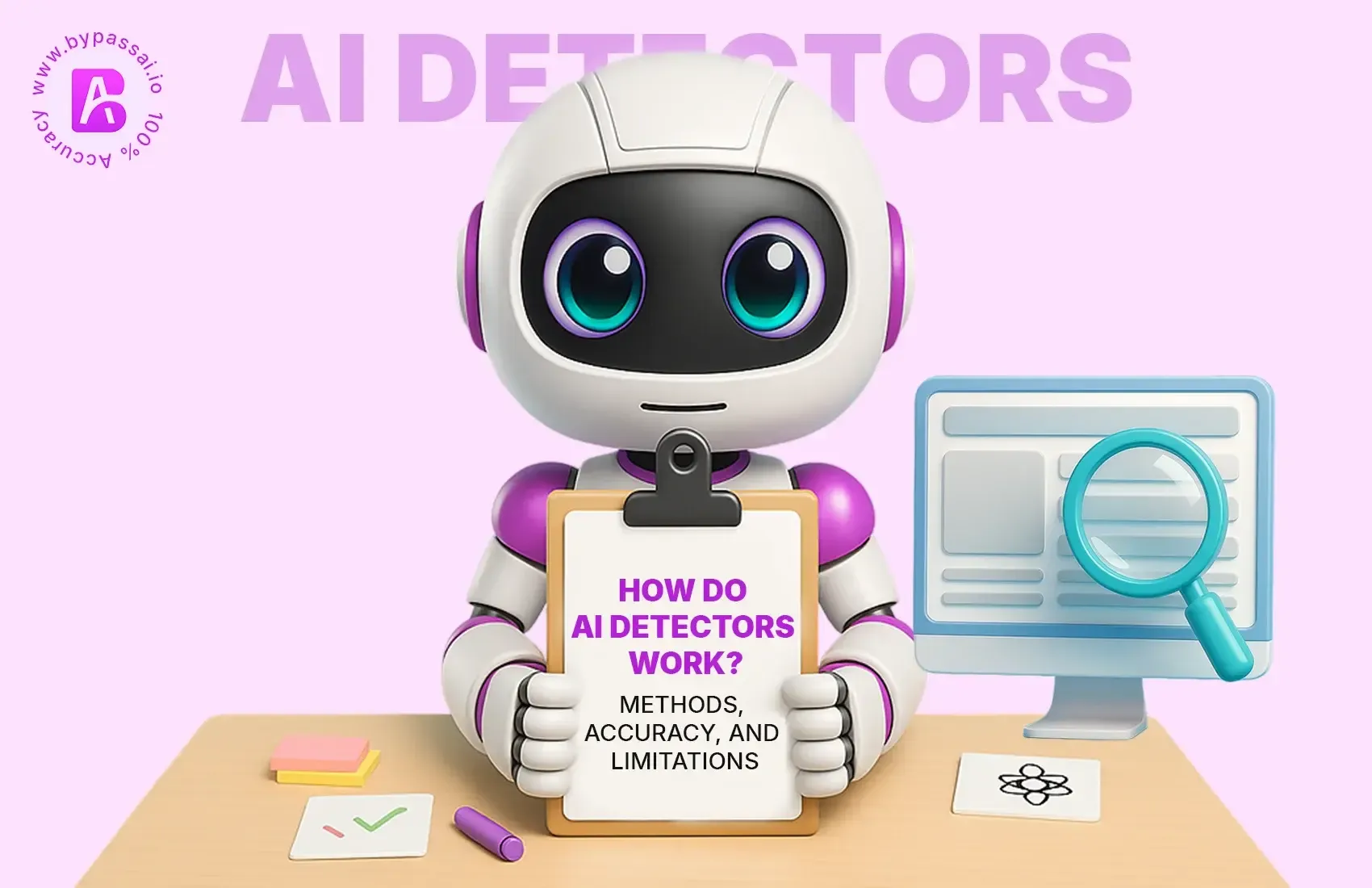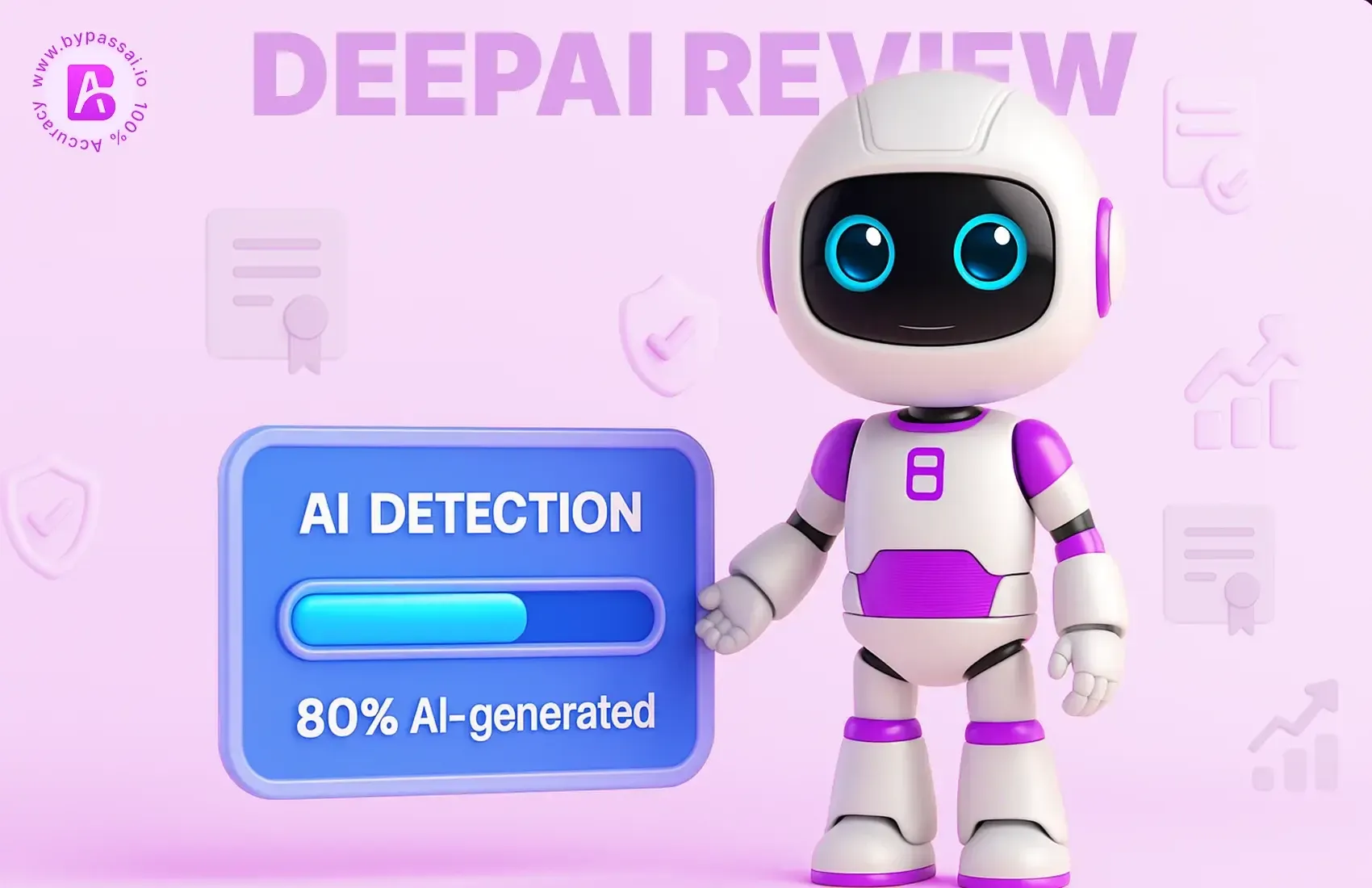Sign In
Welcome to Bypass AI! Sign in to continue your exploration of our platform with all its exciting features.
Forgot Password?
Don’t have an account ? Sign up
Sign Up
Embrace the Future with Bypass AI! Sign up now and let's rewrite the possibilities together.
You have an account ? Sign In
Enter OTP
We’ll send you an OTP on your registered email address
Back to Login
Forgot Password
We'll Send You An Email To Reset Your Password.
Back to Login
Enter OTP
We'll send you an email to reset your password.
Back to Login
Confirm Password
Please enter your new password.
TABLE OF CONTENTS
Ways to Use AI for Writing Content That Ranks Better
Bottom Line
FAQs
Search engine optimization has never been more competitive. Millions of content pieces are published every day. To make yours stand out among them in top positions, you need good writing. That is where artificial intelligence has now entered. AI has now become a beneficial partner for content creators. It assists them in working smartly while creating efficient content. In this blog post, we will talk about how to use AI for writing content that ranks.
Ways to Use AI for Writing Content That Ranks Better
There are many smart ways to use AI that can help your content rank higher on search engines. Below are some practical methods you can apply to get better results.
1. Keyword Research
As they say, good SEO begins with good keyword research. Traditionally, people spend hours finding the right keywords to craft the content. But now AI tools are accelerating the process. They help you uncover the opportunities you might have missed.
AI-powered keyword research tools, such as the one offered by Ahrefs, help you find keywords on an intent basis. Along with keywords, these tools also provide you with necessary information, such as:
- Search volumes
- Difficulty
- CPC
- Keyword type
- User intent
- Clusters
AI-based tools help you find low competition gems. Those that are the biggest ranking opportunities. In fact, using AI tools, you can get dozens of phrases related to primary keywords instantly.
Keyword clustering is another area where AI shines. Now there is no need to separate articles for closely related terms. AI can help you identify semantic relationships and group keywords that should target the same piece of content.
This approach aligns with Google's sophisticated understanding of search intent. And if done right, it can significantly improve your content's ranking potential.
2. SEO-Optimized Outlines
A good outline acts as the foundation for content that ranks better. Now, with the assistance of AI tools, you can analyze top-performing pages for your target keywords. Using AI tools like SurferSEO, you can:
- Identify content format
- Section headings
- Competitor topics
The key is matching your outline to both search intent and the “People Also Ask” questions that appear in search results. AI can quickly scan these elements and suggest a logical content structure that addresses user needs comprehensively.
However, don't accept AI-generated outlines blindly. The best approach involves using AI suggestions as a starting point. After this, customize the structure based on your unique expertise and audience insights. For example, focus on:
- Adding sections that address specific pain points of readers
- Incorporate your brand's unique methodology
- Case study from your personal experience (if any)
Besides this, pay special attention to the heading hierarchy. AI can help ensure your H1, H2, and H3 tags follow a logical structure. This is the thing that both search engines and readers can easily navigate. It signals to Google that your content is well-organized and comprehensive.
3. Write High-Quality Drafts Quickly
Yet, the AI has now become really good at generating content drafts. But the quality of output depends entirely on the quality of your input. By input, we are here referring to the prompts. If you are using generic prompts, just know that they won’t stand out in search results.
The trick about this is to provide detailed prompts. That involves all the details of tone, target audience and certain aspects to be discussed. Artificial intelligence is at the top of organization and preliminary concepts. Nevertheless, they might not have the subtle knowledge that real life experience offers.
It is the reason why it is often recommended to write your first draft with the help of AI. Then sprinkle on your knowledge and particular examples and personal know how that you have to offer. The result of this combination is a truly valuable but comprehensive content.
4. Humanize and Polish the Content
Now comes the big thing. Raw AI content, no matter how well-prompted, requires human refinement. Otherwise, it might fail to truly connect with readers and stand out in search results. The reason?
AI writing tools often lack nuance and sound too robotic. A common reader might fail to connect with such text. That is why it is necessary to humanize AI-generated content. When it comes to humanizing the AI text, many people start fearing that they have to write everything from scratch.
But the reality is opposite. You only have to make some basic changes. In fact, now AI can also help you humanize content. A reliable option for this is SuperHumanizer.ai. When you run AI-generated text through this tool, it reviews the content for coherence and logical flow. After reviewing it, SuperHumanizer breaks the AI flow while giving it a human style.
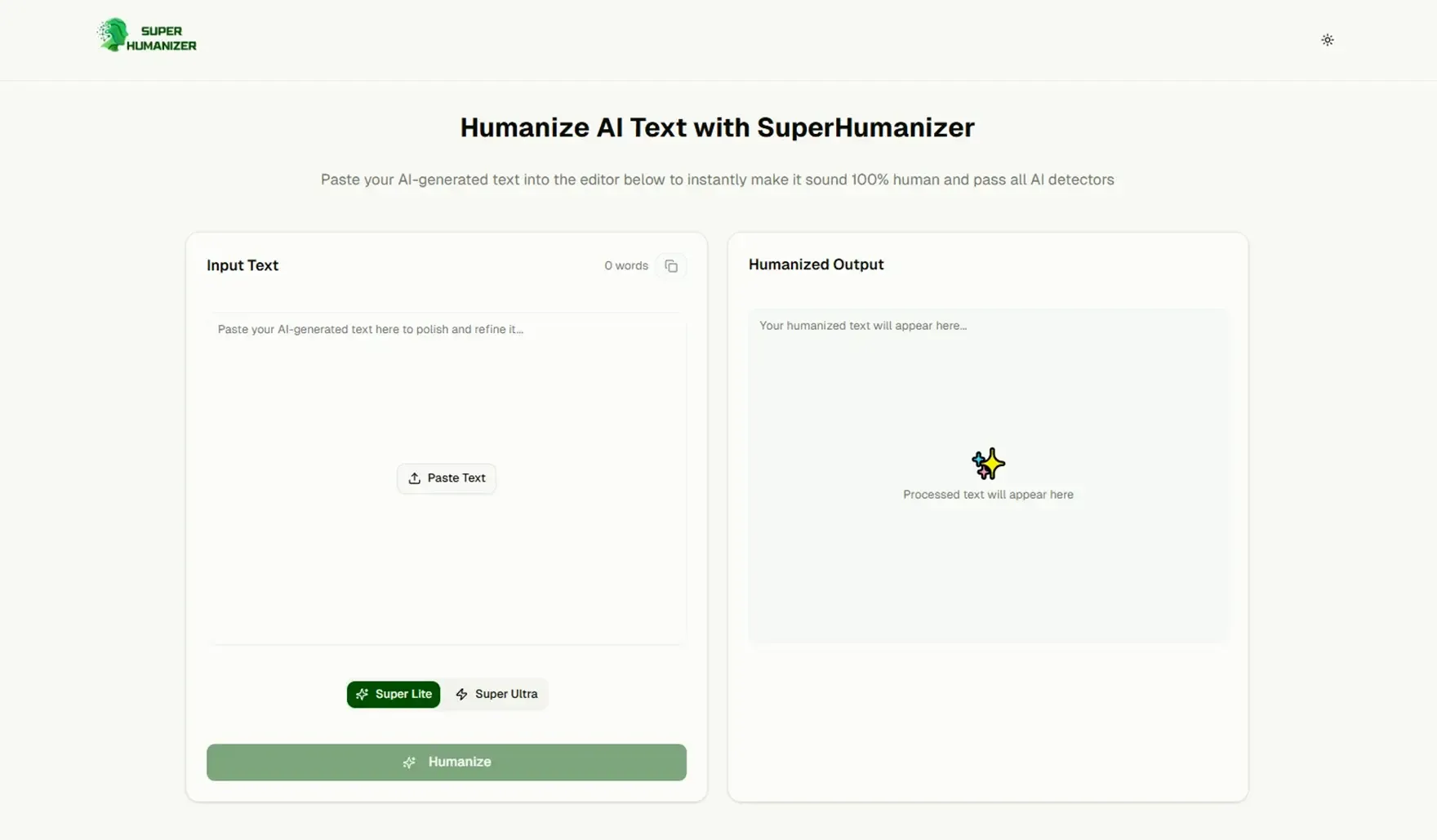
Besides breaking the AI style, this tool also improves the vocabulary of the text and brings in human-style transitions to connect the sentences. And the final output is usually free from robotic tone, style, and AI detection as well.
5. Optimize for On-Page SEO
Optimizing content for SEO is time-consuming. AI tools streamline many of these tasks while ensuring you don't miss critical elements.
For example, meta titles and descriptions are perfect candidates for AI assistance. These elements significantly impact click-through rates. AI tools can help you generate multiple variations that incorporate your target keywords naturally while staying within character limits.
The second is the internal linking. It is also another optimization area in which AI is superior. The state-of-the-art AI software can look at your current content. They provide topical links that are internal that fortify your site. This keeps the readers entertained with what you have to say longer and also aids in SEO.
Optimization of the headings will also make sure that your content is optimized according to the best practice of the SEO and will be readable. AI is able to analyze your headings and give suggestions on how to improve it with adding semantic keywords and keeping a logical sequence. Nevertheless, clarity should always be prioritized by a human reader instead of the density of keywords.
Bottom Line
Writing has been greatly simplified and expedited with the help of AI. It provides smart help at every step, from planning to polishing your content. But the true alchemy is when you combine AI’s assistance with your own voice, ideas, and experience. That’s what makes your content come alive, resonate with readers, and rank well in searches. Finally, if you are a content writer, start doing AI stuff like the ones we described above and get ranked. That’s all for now.
FAQs
1. How can AI help with keyword research?
AI-powered tools like Ahrefs and others can streamline keyword research by identifying high-potential keywords, related terms, and search intent. These tools provide valuable insights such as search volume, difficulty, CPC, and competition level. AI also helps group related keywords, making it easier to target the right audience and improve SEO.
2. What are SEO-optimized outlines, and how can AI help create them?
An SEO-optimized outline is a structured plan for your content that targets user intent and aligns with search engine best practices. AI tools like SurferSEO can analyze top-ranking pages, identify section headings, competitor topics, and related queries to create an effective content structure. However, it's important to customize the outline with your own expertise to make it unique.
3. Can AI generate high-quality drafts for SEO content?
Yes, AI tools can generate high-quality drafts quickly. However, the quality of the content depends on the detail and specificity of your prompts. AI works best when given clear instructions about tone, audience, and the topics to cover. After generating the draft, adding your personal experience, examples, and expertise can elevate the content to stand out.
4. How can I humanize AI-generated content?
AI-generated content often needs refinement to sound natural and engaging. Tools like SuperHumanizer.ai can help humanize the text by improving its flow, coherence, and vocabulary. This ensures that the content feels more authentic and resonates better with readers while avoiding a robotic tone.
5. Can AI replace human writers in content creation?
AI can significantly aid content creation, from drafting to optimization, but it cannot replace the creativity and personal touch of a human writer. The best content is a collaboration between AI tools and the writer's voice, ensuring the content is informative, engaging, and uniquely tailored to the audience.
6. How can I ensure my AI-generated content ranks well on search engines?
To rank well, use AI for efficient keyword research, outline creation, drafting, and SEO optimization. After generating content, ensure it's humanized and personalized. Apply SEO best practices, like optimizing meta tags, headings, and internal links, and always focus on providing value to your audience.
7. Are AI-generated content tools expensive?
The cost of AI content generation tools varies depending on the tool and its features. Some tools offer free versions with limited functionality, while premium tools may charge based on subscription models or usage volume. However, considering the time saved and the efficiency gained, many find AI tools to be a cost-effective investment.
8. Should I rely solely on AI for content creation?
AI should be used as a tool to support content creation, not as a sole solution. While AI can help generate drafts and optimize content, your unique voice, ideas, and expertise should still play a significant role in creating high-quality, engaging content that resonates with your audience.

